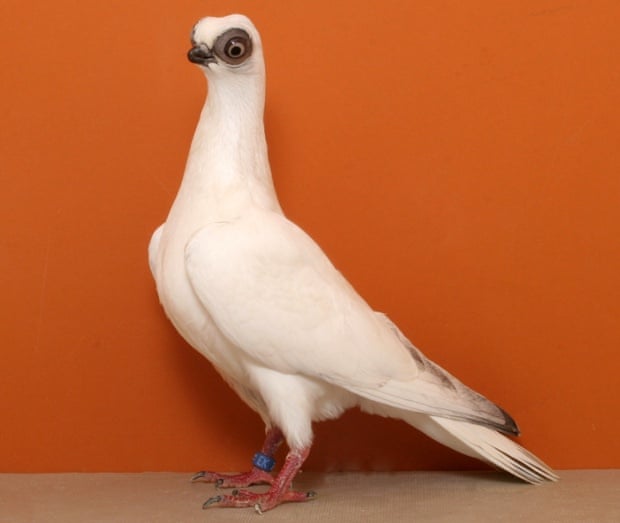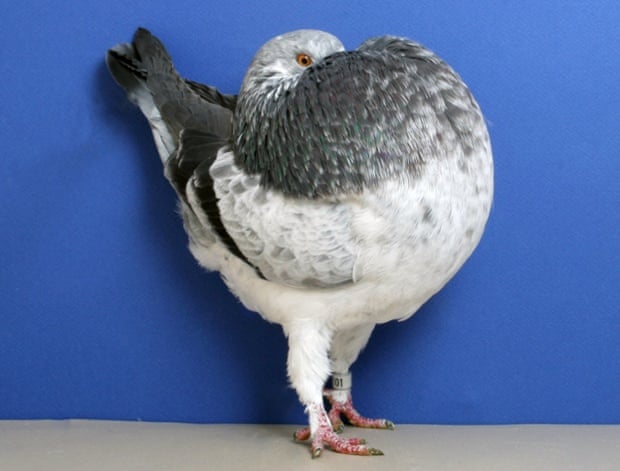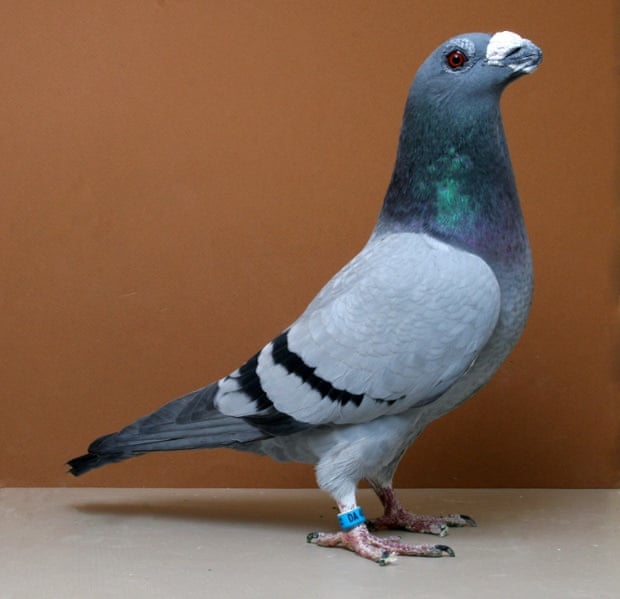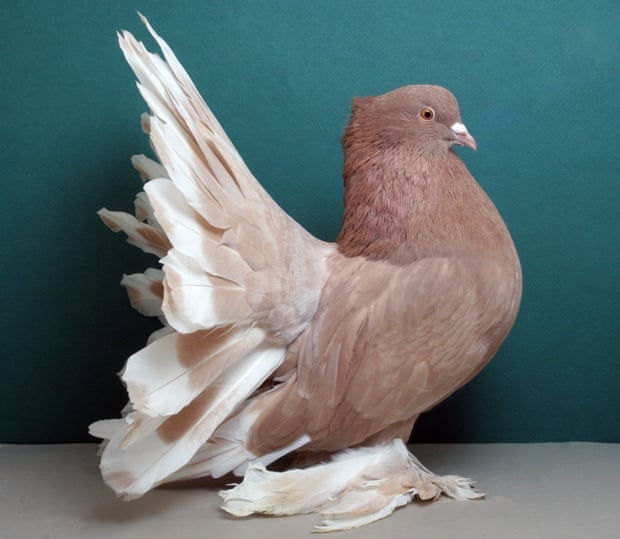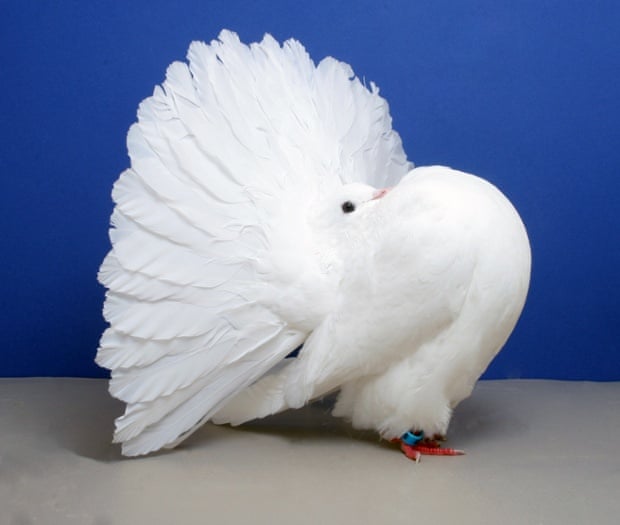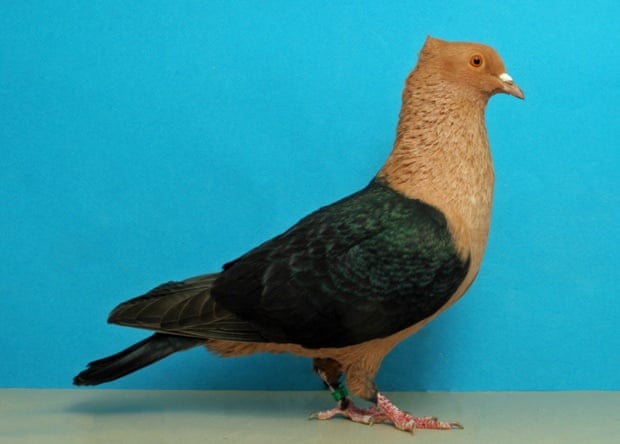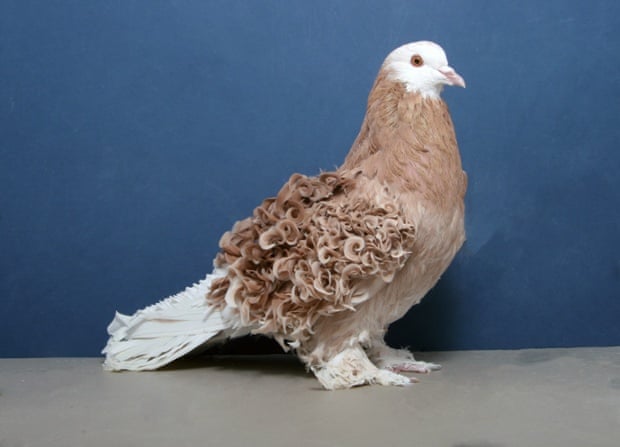Don’t feed the pigeons
– unless you want to travel the world, forge life-long friendships and fall in
love. These are just a few of the many perks of the pigeon hobby touted by
fanciers from around the globe.
“Some people make art
with paint and clay, we make art with pigeons,” said Leon Stephens, president of
the Los Angeles Pigeon Club. Stephens studied genetics in college before
starting his career as a health inspector.
Pigeon fanciers, or
“bio-artists”, as Stephens describes himself, raise pigeons from infancy and
breed them for show. Just as Charles Darwin did in his research for On the
Origin of Species, pigeon fanciers select physical features and cross birds with
particular characteristics to generate offspring with a specific aesthetic. The
result is an eclectic variety of pigeon breeds with exotic colors, wings, crests
and tails.
“I can’t explain what
draws me to the hobby,” Stephens said. “My passion for pigeons borders on
Freudian.”
Nestled in his sunny
backyard pigeon coop in Norco, California, Stephens introduced the beautiful
breeds that have brought him a lifetime of joy. Spectacular birds strutted and
flew around the coops like movie stars, sporting high feather hoods, peacock
fan-like tails, and augmented chests. Stephens grinned with pride.
A large hutch full of
intricate porcelain pigeons in Stephen’s living room sparkled among the bounty
of his wife’s friendly sunflower décor. The collectibles came from faraway
places Stephens has traveled to for pigeon shows, including Denmark and Germany.
“This is nothing
compared to the collection at the German Pigeon Museum,” Stephens said. Germany
is known as the mecca of pigeons, boasting shows with up to 35,000 fancy pigeon
entries. Many pigeon fanciers make the pilgrimage and import special breeds. The
US pigeon community is relatively smaller, but thriving.
Mike Tyson, boxing
champion and devoted pigeon fancier, released 198 white pigeons into the sky to
open the ceremonies last month at the National Pigeon Association Grand National
in Ontario, California. Pigeon fanciers from 21 countries competed with 7,844
pigeons of over 300 breeds. Ron Bordi was the overall show champion, winning
with his Oriental Frill breed pigeon. The show also featured pigeon artwork, a
grand banquet and a competition for juniors.
Pigeon fanciers who
got started as children and competed internationally say they learned
compassion, responsibility and tolerance through raising pigeons.
“If all the presidents
of this world were pigeon fanciers, we would have a much better world to live
in,” said Fadiel Hendricks, Grand National attendee and president of the
National Fancy Pigeon Association of South Africa. Hendricks has been a fancier
for over 40 years. His club staged exhibitions in popular shopping malls to
raise awareness about the hobby. Their efforts were a success. The South African
association gained recognition as an official sports body in 2008.
Fancier Chuck Zeller,
73, credits his pigeon club membership with keeping him off drugs and out of
trouble while growing up in a rough neighborhood in El Monte, California. He
received his first set of pigeons in 1952 from his nextdoor neighbor, an LAPD
officer. When he married, his wife’s friends asked how she could stand her
husband’s pigeon hobby. Zeller says she told them: “At least I know where my
husband is at night. Where’s your husband? What bar stool is he sitting on?”
“It really helped me
relax with my family,” said Zeller. “Whenever I had a stressful day at work, I’d
come home, swat my wife on the butt and head out to the pigeon coop before
dinner.”
The older population
of pigeon fanciers hopes to pass on their love of the hobby to the next
generation. Many of the club members have been friends for over 50 years and
their genuine connection is heartwarming. At a recent Los Angeles Pigeon Club
meeting they served each other cake for someone’s birthday. A little boy ran
around laughing and playing. They shared hugs and gave standing ovations. A
glamorous lady tenderly stroked a black fantail pigeon on her shoulder.
Two Los Angeles Pigeon
Club members even found love through the hobby. In 1969, pigeon fancier Frank
Barrachina saw a photo of Tally Mezzanatto with her prize pigeon in the American
Pigeon Journal and wrote her a letter. They have been together ever since,
raising 1,000 pigeons in their backyard and traveling to compete in shows all
over the world.
Mezzanatto, a retired
microbiologist in the field of tuberculosis for the department of public health
says that contrary to popular belief, pigeons are not dirty, disease-ridden
vermin. According to the New York City department of health, pigeons seldom
spread disease to humans, and when they do, its rarely life-threatening.
“If people worried
about the spread of disease between humans the way they worry about the spread
of disease from pigeons, they’d never leave the house,” says Mezzanatto.
Rick Barker, director
of the American Pigeon Museum in Oklahoma City, believes the public perception
of the pigeon as a filthy animal originated in the Woody Allen classic film
Stardust Memories when a pigeon flies into the apartment and Allen screams:
“They’re rats with wings!” Barker says visitors to the American Pigeon Museum
are often surprised to learn about the long shared history of pigeons and
humans.
“Entering the museum
for the first time is like watching a movie on an Imax when you’ve only ever
watched black and white TV,” said Barker. “Some people have even been moved to
tears.”
The history of pigeons
is extensive and dramatic. The use of pigeons to carry messages dates back to
Noah’s Ark and, before that, Gilgamesh. The ancient Romans used pigeons to
deliver results of chariot races. Genghis Khan established pigeon relay posts
across Asia and Eastern Europe. Charlemagne designated pigeon raising as the
exclusive privilege of the wealthy. During the second world war, spies used
pigeons to carry information across the Channel between Great Britain and
France. This is just a single page from the multi-volume oral history book
veteran pigeon fanciers delve into with one another and newcomers to the hobby.
Muhammad Shaheed, a
civil engineer and young father of five, grew up raising pigeons in Bangladesh
before moving to the US and joining the Los Angeles Pigeon Club. He hopes to be
a bridge between the older, knowledgeable members and the next generation.
“There are two Muslims
in the club,” said Shaheed. “The whole group has always been very welcoming,
accepting and generous with everyone.”
The Islamic State
recently imprisoned 15 pigeon owners in Diyala, Iraq, for a hobby they deemed
“un-Islamic” (three are said to have been executed). Some pigeon breeders may
feed their birds around the same time devout Muslims hold their first of five
daily prayers, an activity that has prompted clerics to issue fatwas against
them.
Shaheed recently
completed significant updates to the club website and participates in outreach
to the young community. He hopes the pigeon hobby can give young people some
distance from technology and bring them closer to nature. “I’m kind of an
oddball in the group because I let my pigeons mate with whoever they want,” said
Shaheed. “In the wild, pigeons mate for life.”
John DeCarlo Jr, 36, a
third-generation pigeon fancier and a real estate developer in Gilroy,
California, enjoys sharing the hobby with his 13-year-old son.
“It broadens your mind
and teaches responsibility because you have to care for and keep something
alive,” said DeCarlo. He says his son still plays video games, but he takes care
of his birds too.
Not all modern kids
are as willing to put aside the immediate gratification of their devices to put
in the several years it may take to raise champion fancy pigeons. Chuck Zeller
described a scene at a show in San Bernadino where a child was interested in
buying two pigeons to get started. Fancy pigeons cost anywhere between a few
dollars and a few thousand dollars, depending on the show value of its specific
traits. Zeller says the child asked: “How much do the pigeons that I can win the
next show with cost?”
“I nearly fell to the
floor in shock,” said Zeller. “All he cared about was winning.”
Zeller acknowledges
that lack of commitment isn’t the only factor holding today’s youth back from
taking up the hobby. Keeping pigeons is now illegal in many places due to city
ordinances. Before 1965, Zeller says he could find over a hundred people raising
pigeons in a five-mile radius. When the neighbors complained and Zeller was
taken to court to defend his hobby, he pointed out that even the mayor at the
time was keeping illegal pigeons.
This won’t stop most
fanciers from pursuing their dreams. The compassion and acceptance of diversity
that so many pigeon fanciers embody creates unity and solidifies their passion
for the hobby. As pigeon fancier Bob Nolan puts it: “When you meet someone else
who loves pigeons, you’re friends for life.”
